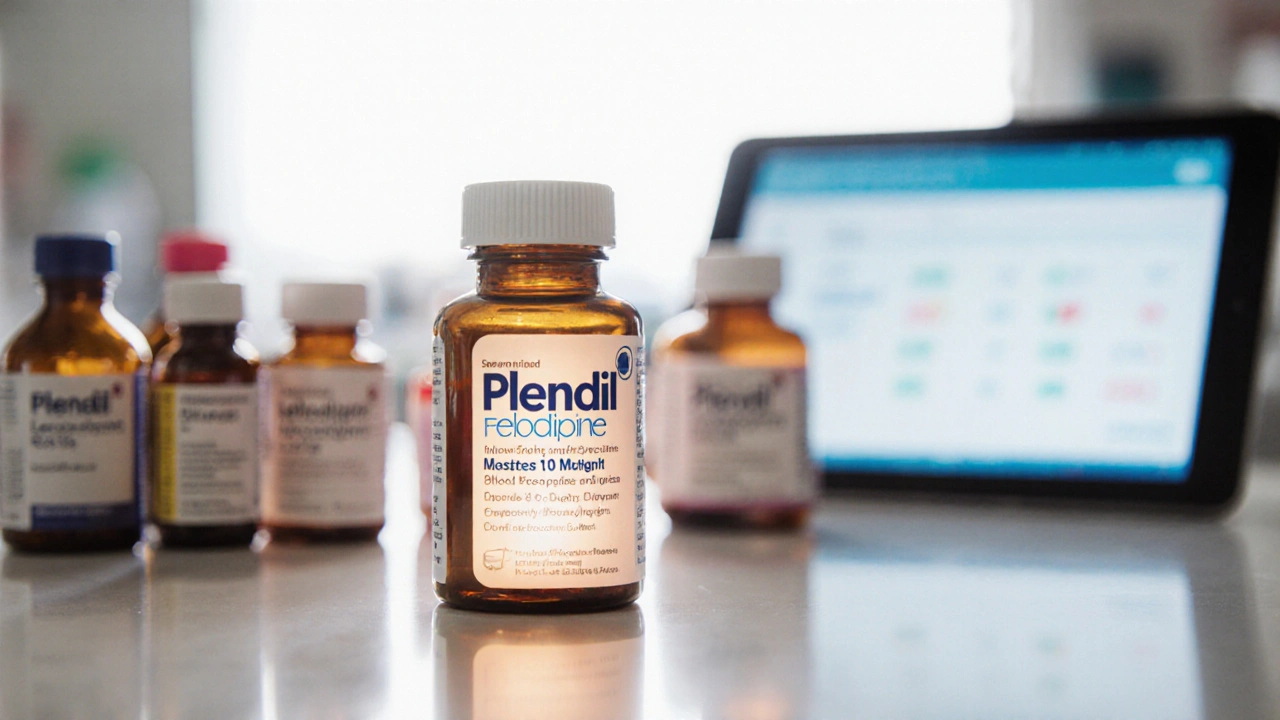Felodipine – A Practical Look at This Calcium Channel Blocker
When working with felodipine, a long‑acting dihydropyridine calcium channel blocker used to treat high blood pressure. Also known as a hypertension medication, it helps relax arterial smooth muscle, lowering vascular resistance and easing the heart's workload.
Felodipine belongs to the calcium channel blocker, a drug class that blocks calcium entry into vascular smooth‑muscle cells. By preventing calcium influx, the vessels stay dilated, which directly reduces systolic and diastolic pressure. In other words, felodipine lowers blood pressure by acting on the same pathway that many other antihypertensives target, but with a smoother onset and fewer reflex tachycardia episodes.
How Felodipine Is Used in Hypertension Management
Clinicians typically prescribe felodipine for essential hypertension, chronically elevated arterial pressure that increases cardiovascular risk. The drug comes in 2.5 mg, 5 mg and 10 mg tablets, taken once daily in the morning. Because of its long half‑life (about 20 hours), steady plasma levels are maintained, which means fewer missed‑dose spikes. It works well as a first‑line agent or as an add‑on to an ACE‑inhibitor like perindopril or a beta‑blocker such as atenolol, mirroring the combination strategies highlighted in many of our other articles.
The dosage is usually started low (2.5 mg) and titrated up based on blood‑pressure response and tolerance. Patients with severe hepatic impairment may need a reduced dose, as the liver metabolizes felodipine via CYP3A4. Kidney function is less critical, but regular monitoring is still advised for anyone on multiple antihypertensives.
Side‑effect wise, felodipine is known for causing peripheral edema, especially in the ankles. This happens because arteriolar dilation increases hydrostatic pressure in the capillaries. A flushing sensation and headache are also common, reflecting the vasodilatory effect. Compared with older dihydropyridines like nifedipine, felodipine tends to produce milder reflex tachycardia, which many patients find more tolerable.
Drug interactions matter. Strong CYP3A4 inhibitors—such as ketoconazole, erythromycin, or grapefruit juice—can raise felodipine levels and amplify side effects. Conversely, inducers like rifampin may lower its effectiveness. Patients should always inform their doctors about over‑the‑counter meds and supplements, especially those that affect liver enzymes.
When deciding whether felodipine is the right choice, consider how it stacks up against other blood pressure medication, any drug used to lower systemic arterial pressure. Compared with a beta‑blocker like atenolol, felodipine does not affect heart rate as much, making it a better fit for patients who experience bradycardia. Against an ACE‑inhibitor such as perindopril, felodipine avoids the dry cough side effect but may cause more edema. The decision often hinges on a patient’s comorbidities, tolerance, and lifestyle.
Practical tips for anyone starting felodipine: take the tablet with a full glass of water, preferably in the morning to match the body’s natural blood‑pressure rhythm. Keep a simple diary of blood‑pressure readings and any swelling you notice. If ankle swelling becomes uncomfortable, discuss dose adjustment or the addition of a low‑dose diuretic with your provider. Maintaining a low‑salt diet, regular exercise, and weight control will amplify the drug’s effect and reduce the need for higher doses.
Below you’ll find a curated set of articles that dive deeper into specific aspects of felodipine—its pharmacology, comparison with other hypertension treatments, safety tips for online pharmacy purchases, and more. Each piece is written to give you clear, actionable information you can use right away.

